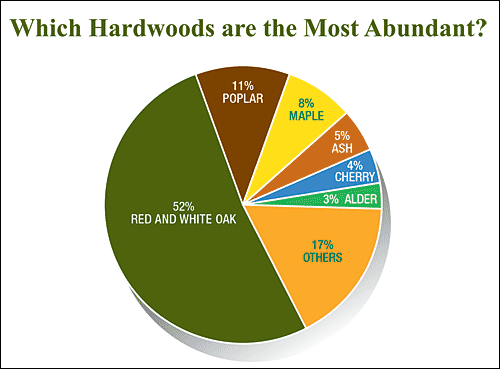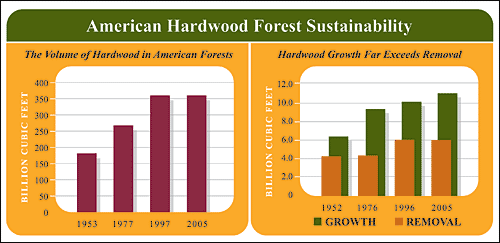American Hardwoods for High-Traffic Areas
Life Cycle Cost
If other factors are considered beyond initial purchase price and installation of hardwood floors, hardwoods have been shown to be actually less expensive overall than sheet vinyl, linoleum, carpet and other alternatives. Broadloom and tile carpeting, because of its four- to-six-year life span, needs to be replaced three times more frequently over a 15-year lifespan than a hardwood floor. After 15 or 20 years of use, hardwood flooring can gain a fresh, new appearance with refinishing for roughly half the cost of replacing carpet or other flooring options. Hardwood floors can last 25, 30, even 50 years or more. As American Eagle's Bezek puts it, "The hardwood itself is forever if you don't mind staying with the same look and refinishing. We have had some floors down for 20 to 30 years but this doesn't happen often because the architects want to change the look."
Several studies point to the favorable life cycle cost implications of natural materials, and hardwood floors in particular, over synthetic materials. For example, in her life cycle cost comparison of a dozen frequently used synthetic and natural flooring products, Sue Tartaglio, Interior Designer, Burt Hill, Butler, Pennsylvania, shows that in facilities with a lifetime use of more than 15 years, hardwood flooring, while it may have higher upfront costs, has life cycle costs that are significantly lower. These findings were based on manufacturers' published maintenance data/life cycle costs, and conversations with manufacturers' representatives.
A study by Ducker Research Company, Inc., comparing the life cycle cost of maple gymnasium flooring to that of PVC and poured urethane, found that maple flooring shows a significant advantage. According to the study, the life cycle cost of PVC is 42 percent higher than maple flooring. In addition, the life expectancy of one maple floor is two and one half times that of a PVC floor. Assuming a 38-year life span, one maple floor is the equivalent of more than two PVC floors. Likewise, the life cycle cost of poured urethane flooring is 40 percent higher than that of maple flooring.
A 1997 study by Jönsson et al., which examined the environmental impacts of linoleum, vinyl, and untreated solid wood flooring in Sweden using life-cycle assessment, found that because linoleum and vinyl both require extensive material inputs relative to wood, solid wood flooring was more environmentally sound. In their 2006 study of the flooring industry in Germany, Nebel, Zimmer, and Wegener examined the whole life cycle of four wood floor coverings, including solid parquet, multilayer parquet, solid floor boards, and wood blocks. The authors point out that, compared with all German gross domestic products, wood flooring contributed significantly less (factors of 5 to 50 lower) to impact categories including climate change, acidification, eutrophication, photo-oxidant formation, and ozone depletion. The authors further note that substituting water-based glues for those made from solvents could reduce photo-oxidant formation by nearly 70 percent. Storage of carbon inherent in wood flooring coupled with energy production alternatives to fossil fuels realized by residual wood and post-consumer wood streams, claim the authors, represent significantly reduced, perhaps even negative, global warming potential for these products.
In 2004 research, the Consortium for Research on Renewable Materials (CORRIM), a U.S. non-profit corporation of 15 research universities, concluded that steel framing used 17 percent more energy than wood construction for a typical house in Minnesota, while concrete construction used 16 percent more energy than a wood construction house in Atlanta. In both situations, the consortium found that the use of steel had 26 percent more global warming potential than wood, and concrete had 31 percent more.
The Athena Model, developed by the non-profit Athena Sustainable Materials Institute, compares the cradle-to-grave ecological quotient of wood, steel and concrete across the six stages of a material's life expectancy: resource extraction, manufacturing, on-site construction, facility occupancy, and demolition and ultimate reuse or recycling. The Athena Model found wood to have the lowest environmental impact in each of these categories, and that wood exceeds the other materials in terms of environmental soundness and energy use; production of greenhouse gases; air and water pollution; production of solid waste; and overall ecological resource use.
|











